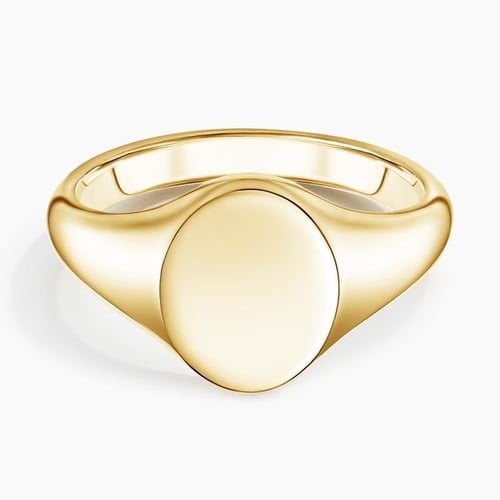
When it comes to engagement rings, diamonds have long been the traditional choice. But now, many modern couples are exploring alternatives to the classic diamond. Non diamond engagement rings offer a world of variety and can be equally stunning. Whether you are looking for something unique, affordable, or simple, non diamond engagement rings provide many options to suit any taste and budget.

Unique Non Diamond Engagement Rings
For those seeking a ring that stands out, unique non diamond engagement rings offer a variety of gemstones and designs. Classic gemstones like sapphires, emeralds, and rubies are particularly popular for non diamond engagement ring options. Here are some popular choices:
Sapphire Versailles Hidden Halo Diamond Ring
Alternating round and marquise diamonds create an alluring pattern in this chic and distinctive engagement ring that features a shimmering hidden halo.
Lab Grown Sapphire Olympia Lab Diamond Ring
This classic engagement ring features sparkling diamond accents that extend three-fourths of the way around the ring.
Lab Grown Sapphire Camellia Milgrain Lab Diamond Ring
A milgrain filament winds upwards towards round and pear shaped diamonds that rest at either side of the center stone for a subtly floral look, while a trellis-style head adds a bit of whimsy.
Sapphire Secret Garden Diamond Ring
Glistening marquise-shaped diamond buds rest on whimsical vines of precious metal winding towards the center gem for a look of natural elegance.
Lab Grown Sapphire Petite Twisted Vine Lab Diamond Ring
Affordable Non Diamond Engagement Rings
Budget is an important factor when selecting an engagement ring. There are several beautiful, affordable non diamond engagement ring styles that don’t compromise on quality or style. Consider popular options like moissanite, morganite, aquamarine, or topaz gemstones for an engagement ring that’s both stunning and a more cost-effective option than diamonds. Here are some affordable alternatives:
Aquamarine Floating Three Stone Diamond Ring
A classic three stone ring silhouette is updated by a unique open gallery, allowing maximum light to reach the floating diamond.
Morganite Aimee Diamond Ring
An ultra thin shank is adorned with prong-set diamonds spaced elegantly half of the way around the band for a sophisticated and alluring look while lustrous bead prongs secure the center stone.
Moissanite 2mm Freesia Solitaire Ring
Lustrous metal flows upwards like vines reaching towards the sun in this subtly nature-inspired solitaire ring that secures the center stone in classic claw prongs.
Aquamarine Camellia Hidden Accent Diamond Ring
Shimmering diamonds in a subtly floral pattern form a unique hidden accent along the side of this design while whimsical milgrain filaments and diamonds adorn the band.
Morganite Arden Diamond Ring
Budding round and marquise diamonds glimmer on each side of the center gem in this nature-inspired trellis ring.
Simple Non Diamond Engagement Rings
For those who prefer understated elegance, simple non diamond engagement rings are a great choice. Some of our favorite non diamond engagement rings include plain metal bands with intricate designs, or timeless classics like signet rings. These rings, like our picks below, focus on clean lines and minimalistic style:
Classic Signet Ring
Non diamond engagement rings offer diverse options that cater to various tastes, styles, and budgets. Whether you are drawn to their unconventional appeal, affordability, or simplicity, these rings provide a beautiful and meaningful way to symbolize your love and commitment. By considering the various gemstones and designs available, you can find the perfect ring that reflects your personality and values.
















I have longed not been a fan of the diamond lock that has overwhelmed the jewelry industry for engagement/wedding rings. One of the reasons why i am greatly considering using your site. I want to use bluey opal, as your Budapest pendant is my dream piece of jewelry. Is it possible to get such a gemstone?
Hi Evette, we can create almost any ring through our custom design process, and we would love to help you create your perfect ring! You can learn more about our custom design process here: http://www.brilliantearth.com/custom-ring-design-process/. If you have any questions, feel free to reach out to our custom design specialists via email (http://www.brilliantearth.com/contact/) or by calling 800-691-0952. Thank you for your interest!
Actually what I am interested in is a setting with a diamond militaries with colored side stones possibly topaz or amethyst-is that possible?
Hi Revenwyn, we can create almost any ring through our custom design process, and we would love to help you create your perfect ring! You can learn more about our custom design process here: http://www.brilliantearth.com/custom-ring-design-process/. If you have any questions, feel free to reach out to our custom design specialists via email (http://www.brilliantearth.com/contact/) or by calling 800-691-0952.
Can you do a ring in a traditional three-stone ring style with three different stones? I’d be looking for a tanzanite center flanked by a diamond and a ruby.
My engagement ring is also a center stone dark oval blue sapphire with the sides accented in a “V” with smaller diamonds. I just love it. Wouldn’t want it any other way.
I have an engagement ring that the center stone is a green garnet flanked by a triangular diamond on each side.It IS gorgeous!!
Hi Spiros,
We do not offer mint green seafoam opal as a standard option, but our jewelry specialists can often source special gems upon request, or provide similar options. They’d be happy to assist at 800.691.0952. Thanks for your interest!
I was wondering if you carried mint green seafoam opal? I’ve been looking for someone on the west coast that carries it…please help. Thank you.